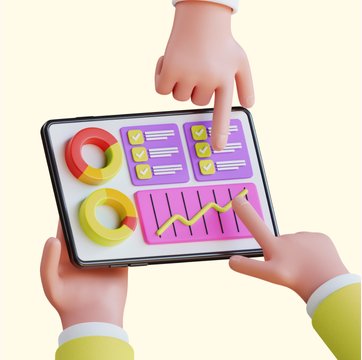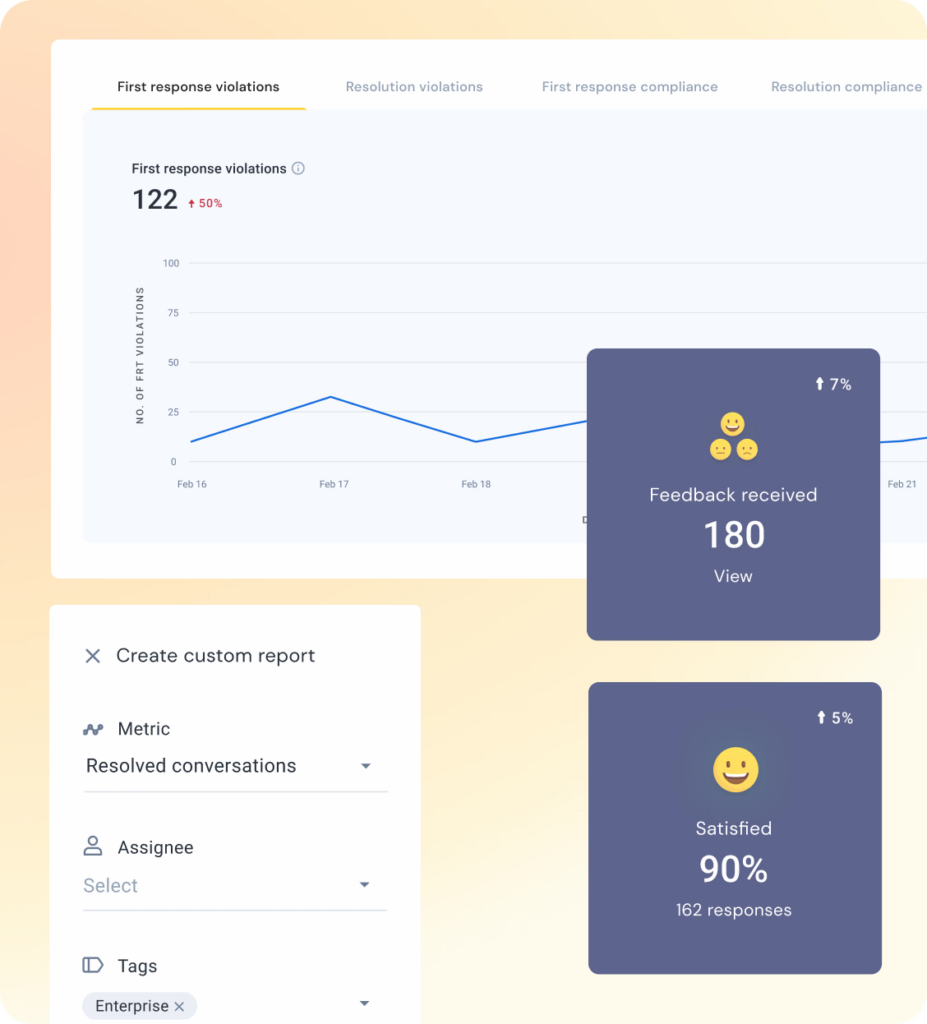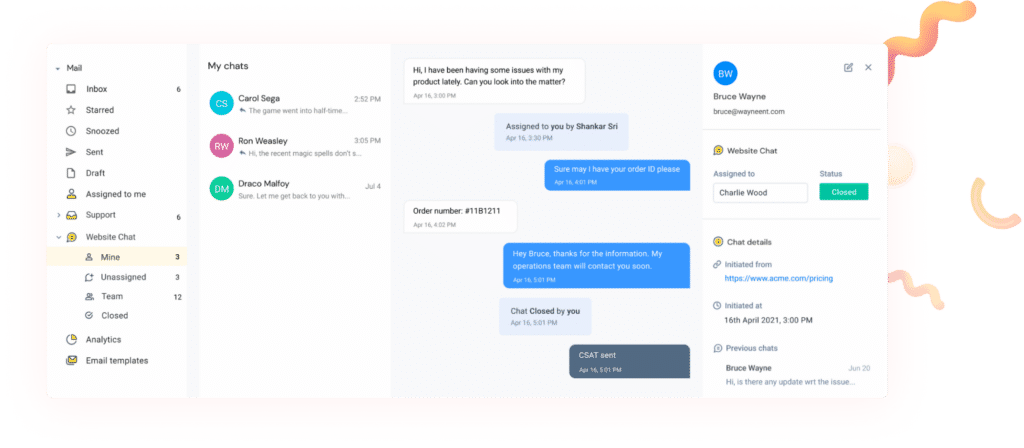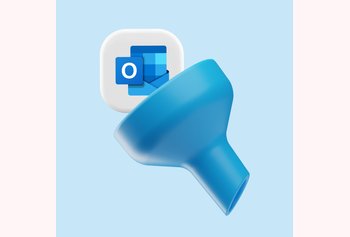Top 9 Ways to Improve Your Customer Success Strategy

Table of contents
When it comes to business, particularly in SaaS, the significance of a robust customer success strategy cannot be overstated. It’s the linchpin that ensures customers not only realize the full potential of your product but become its staunch advocates.
This strategy is a multifaceted, one that includes nurturing customer relationships, understanding their journey, and constantly adapting to their evolving needs.
In this comprehensive guide, we delve into the top 9 ways to refine your customer success strategy with practical tips to execute them, ensuring your customers don’t just conduct business with you but thrive and advocate for your brand. But first, let’s understand what is a customer success strategy:
Table of Contents
- What Is a Customer Success Strategy?
- 9 Actionable Ways To Improve Your Customer Success Strategy
- 8. Regularly Monitoring and Adjusting Customer Success Metrics
- How to Improve Your Customer Success Strategy
What Is a Customer Success Strategy?
Imagine you’re a gardener. Each plant (customer) in your garden (business) requires specific care (a customer success strategy) to flourish. Just as a gardener nurtures plants through different seasons and stages of growth, a customer success strategy is about nurturing customers throughout their lifecycle with your product.
It’s a systematic approach that focuses on building strong relationships, understanding and anticipating customer needs, and consistently delivering value. This strategy goes beyond mere reactive customer service; it’s a proactive, relationship-driven, outcome-oriented approach that ensures customers not only reach but surpass their desired outcomes with your product or service.
9 Actionable Ways To Improve Your Customer Success Strategy
Here are the best nine ways to improve your customer success strategy to reduce churn and boost loyalty.
1. Understanding Customer Journeys for Better Engagement
One common, prevalent challenge in managing customer interactions is effectively engaging with customers at different stages of their journey. Without a clear understanding of the customer journey, interactions can become disjointed, leading to a less effective customer experience overall.
To address this, it’s essential to map and understand the different stages of the customer journey. This enables a more tailored and impactful engagement strategy.
Here are some tips for understanding and leveraging customer journeys:
- Outline each stage of the customer journey, from initial awareness to post-purchase support. This map should include key touchpoints and potential customer emotions or questions at each stage.
Sample Outline of a Customer Journey
1. Awareness
– Touchpoints: Social media ads, blog posts, word-of-mouth, online reviews.
– Customer Emotions: Curiosity, interest.
– Potential Questions: “What is this product/service?”, “How does it differ from others in the market?”
2. Consideration
– Touchpoints: Website visit, product demos, customer testimonials, detailed product information, engaging with sales or customer service teams.
– Customer Emotions: Evaluation, comparison.
– Potential Questions: “Is this product/service right for me?”, “How does it compare to competitors?”, “What value will it add?”
3. Purchase
– Touchpoints: Online checkout process, in-store purchase, customer service interactions during the purchase.
– Customer Emotions: Anticipation, decision-making.
– Potential Questions: “Is the purchasing process simple and secure?”, “Am I making the right choice?”, “What if I need to return it?”
4. Retention
– Touchpoints: Follow-up emails, customer support, loyalty programs, satisfaction surveys, newsletters.
– Customer Emotions: Satisfaction, disappointment, loyalty.
– Potential Questions: “Did I make the right decision?”, “How do I get the most out of this product/service?”, “What kind of post-purchase support is available?”
5. Advocacy
– Touchpoints: Online reviews, social media sharing, word-of-mouth recommendations, referral programs.
– Customer Emotions: Pride, trust, enthusiasm.
– Potential Questions: “How can I share my positive experience with others?”, “Is there a benefit to referring friends?”, “How can I continue to support this brand?”
- Group customers based on their current stage in the journey to deliver more relevant communication and support. For instance, post-purchase, customers can receive newsletters of feature updates on your product, product webinars to see how they can leverage certain features, or articles and relevant news updates of the industry in which your business works.
- Use CSAT surveys or feedback tools via customer service platforms like Hiver to gather insights from customers at different journey stages, helping to refine your engagement strategies.
- Develop unique communication strategies for each stage of the journey. For instance, educational content to improve usability of the product for new customers and loyalty programs for long-term customers.
- Ensure your team understands the different stages of the customer journey and how to interact effectively with customers at each stage.
By focusing on the customer journey, you can create more meaningful and effective interactions that resonate with customers and enhance their overall experience with your brand.
2. Personalizing Customer Interactions with Segmentation and Analytics
Another challenge in customer success is treating all customers uniformly without considering their unique needs and preferences, a.k.a lack of personalization. This one-size-fits-all approach can lead to less effective customer engagement and missed opportunities for deeper connections.
To tackle this, consider using customer segmentation and analytics to personalize interactions. By understanding different customer groups and their behaviors, companies can tailor their communication and support to match specific customer needs. Here are some actionable strategies for personalizing customer interactions:
- Divide your customer base into groups based on shared characteristics such as behavior, demographics, or purchase history. This helps in delivering more relevant and personalized experiences.
For instance, you can create segments like ‘First-time Buyers’, ‘Frequent Shoppers’, and ‘Seasonal Customers’, using factors like purchase frequency and average spend, to tailor marketing campaigns and loyalty offers that resonate specifically with each group’s buying habits and preferences. - Use data analytics tools to gain insights into customer preferences, behaviors, and feedback. This data can inform how you tailor interactions and offerings.
- Develop communication strategies that address the specific needs and interests of each segment. This might include customized email campaigns, targeted offers, or personalized product recommendations.
- For interactions that need to be speedy yet personalized, use templates and canned responses. Invest in a customer service platform like Hiver, where you can personalize these communications with essential information, such as name, latest order ID, etc., in no time without any inconsistencies.
For example, you can have a post-purchase template as follows:
Subject: Update on Your Recent Order – [Customer’s Name]
Dear [Customer’s Name],
Thank you for your purchase of [Product/Service Name]! Your order ID is [Order ID]. We wanted to let you know that your order is [on the way/being processed/etc.].
If you have any questions or need further assistance, please don’t hesitate to reach out. Our team is here to ensure you have the best experience possible.
Warm regards,
[Your Name]
[Your Position]
[Your Contact Information]
- Ensure that your customer success team is trained in using customer data to personalize interactions, making each customer feel valued and understood.
Through segmentation and analytics, you can create more personalized and impactful customer experiences, leading to increased satisfaction and loyalty. With the right tools by your side, like Hiver, you can implement these strategies much quicker via features like custom reports to dig for the data you really want and personalized interactions for quick and consistent query resolution.

3. Implementing Proactive Support to Anticipate Customer Needs
A mistake that customer success teams make is reacting to customer issues only after they arise rather than anticipating and addressing them proactively. This reactive approach can lead to customer frustration and a perception of inadequate support.
The key to overcoming this challenge is implementing proactive support strategies. By anticipating customer needs and addressing them before they become issues, you can enhance customer satisfaction and loyalty. Some strategies for proactive customer support include:
- Create a comprehensive knowledge base that customers can access to find answers to common questions, reducing the need for direct support.

- Regularly communicate with customers, especially when new features are released or significant changes are made, to keep them informed and prepared.
- Provide training sessions or webinars on how to effectively use your product, focusing on areas where customers typically have difficulties.
- Keep an eye on social media and online forums for discussions about your product. This can provide early indicators of potential issues or areas of confusion.
By adopting a proactive approach to customer support, you can significantly improve the customer experience, making your customers feel valued and well-supported.
4. Enhancing Customer Onboarding for Quicker Product Adoption
For customer success, a major hurdle to overcome is ensuring new users understand and adopt the product effectively. Early product adoption is a must-have for any business because it helps your customers realize the value of your product and even leads to reduced churn and more upselling opportunities.
But this is easier said than done. Without a robust onboarding process, customers may feel overwhelmed or confused, leading to a slow adoption rate and potential churn.
To overcome this, focus on enhancing the customer onboarding experience. A well-structured onboarding process can accelerate product understanding and adoption, setting the foundation for long-term customer success. Here are some strategies for improving customer onboarding for quicker product adoption:
- Develop detailed guides or tutorials that walk new users through the product’s features and functionalities. This can include step-by-step instructions, videos, or walkthroughs in the form of an interactive flipbook.
- Provide personalized onboarding sessions, either one-on-one or in small groups, to address specific customer needs and questions through dedicated customer success account managers.
- Incorporate interactive elements like quizzes, checklists, or gamified experiences into the onboarding process to make it more engaging and memorable.
- Implement mechanisms to collect feedback from customers during the onboarding process. This feedback can be used to continually refine and improve the onboarding experience.
- Track how new users interact with the product during the initial stages and intervene with additional support or guidance if necessary. Tools like Mixpanel and Amplitude can help with this.
By prioritizing a seamless and informative onboarding experience, you can help customers quickly realize the value of your product, leading to higher customer satisfaction and reduced churn.
5. Leveraging Customer Feedback for Continuous Improvement
Ensuring that customer feedback is effectively gathered and utilized for ongoing product and service improvement is a must for a customer success strategy to work smoothly. Without this, your customers may feel unheard and even leave after just a single bad experience. Ignoring customer feedback also leads to missed opportunities for enhancements.
To effectively leverage customer feedback, it’s crucial to establish a system that not only collects feedback but also integrates it into your continuous improvement processes.
Some strategies for leveraging customer feedback:
- Systematically analyze client feedback to identify common themes, suggestions, and pain points. Use this data to inform product development and customer service teams. For example, a mobile app company finds frequent user requests for an offline mode. They develop this feature in the next update and inform the customer service team to highlight this enhancement in their communications.
- Communicate back to customers about how their feedback is being used with an effective feedback loop. This demonstrates that you value their input and are committed to making improvements based on their suggestions.
- Engage with customers through beta testing or focus groups to get direct input on new features or changes.
- Ensure your team understands the importance of customer feedback and is trained to act on it, whether it’s making small tweaks or escalating major concerns for further action.
By effectively leveraging customer feedback, you not only enhance your product and service offerings but also build stronger, more trusting relationships with your customers.
6. Streamlining Customer Support with Efficient Technology Integration
Managing a high volume of support requests while having to maintain a high quality of service is no cakewalk. Inefficient processes and inadequate technology can lead to slower response times.
Addressing this issue involves integrating efficient technology solutions into your customer support system. The right technology can streamline support processes, reduce response times, elevate your customer success strategy, and improve overall service quality. Some tips for streamlining customer support with technology:
- Use AI and Chatbots for Immediate Responses: Employ AI-powered chatbots to provide immediate, automated responses to common queries. This can reduce the workload on human agents and speed up response times.
- Adopt Omnichannel Support Platforms: Implement an omnichannel approach via customer service platforms like Hiver that allows customers to reach out through various channels like email, social media, and live chat and manage these interactions seamlessly in one platform.

- Leverage Analytics for Performance Monitoring: Use analytics tools to monitor support team performance, identify bottlenecks, and improve response strategies based on data-driven insights.
- Automate Routine Tasks: Automate routine tasks such as ticket routing and follow-up emails to free up time for support agents to focus on more complex issues.
By integrating efficient technology into customer interactions, companies can not only enhance their operational efficiency but also significantly improve the customer support experience.
7. Building a Collaborative Team Culture for Enhanced Customer Success
A customer success team that operates in silos, where different departments or team members lack coordination and communication, is a recipe for disaster. This disjointed approach can lead to inconsistent customer experiences and missed opportunities for providing comprehensive support.
To counter this, fostering a collaborative team culture is essential. A customer success team that works together seamlessly can provide a more unified and effective experience to clients. Some actionable ways for building a collaborative team culture:
- Facilitate regular meetings and communication channels between different departments, such as sales, support, and product development, to ensure alignment on customer success goals.
- Use customer service platforms like Hiver with features like Notes and @mentions that allow for easy communication and information sharing among team members, regardless of their department or location.
- Define common goals and metrics for customer success that all team members are aware of and accountable for. This promotes a unified approach to customer interactions.
- Foster a customer-centric culture where every team member understands the importance of customer success and is empowered to take actions that enhance customer experiences.
- Offer training to team members on effective collaboration and communication skills. This helps in breaking down silos and encourages a more cohesive team effort.
By building a culture of collaboration and communication, teams can work more effectively together, leading to improved customer success outcomes.
8. Regularly Monitoring and Adjusting Customer Success Metrics
Another challenge in customer success is ensuring that the strategies and tactics used are actually delivering the desired outcomes. Without regular monitoring and adjustment of key performance indicators (KPIs), it’s difficult to gauge the effectiveness of your customer success efforts.
To address this, it’s crucial to establish a system for regularly monitoring and adjusting customer success metrics. This allows for continuous improvement and adaptation to changing customer needs and market conditions. Here are some strategies for monitoring and adjusting customer success metrics:
- Establish clear KPIs in terms of customer satisfaction scores, retention rates, and renewal rate. These metrics should directly relate to your overall customer success goals.
- Use tools and software to regularly monitor these KPIs, ensuring you have up-to-date data on how your strategies are performing. You can use Tableau or Hubspot to track and monitor these metrics.
- Schedule regular review sessions to assess the performance against your KPIs. This helps in identifying areas for improvement and making necessary adjustments.
- As mentioned earlier, continuously collecting and analyzing customer feedback is an important part of an effective customer success strategy. This feedback can provide valuable insights into areas that need adjustment.
- Educate your team on the importance of data-driven decision-making and how to use KPIs to guide customer success strategies.
By regularly monitoring and adjusting your customer success metrics, you can ensure that your strategies remain effective and aligned with your customer’s evolving needs.
9. Creating a Scalable Customer Success Framework
As businesses grow, a significant challenge in customer success is scaling the strategies and processes to accommodate a larger customer base without compromising on service quality.
Developing a scalable customer success framework is essential to manage growth effectively. A scalable framework allows you to maintain high levels of customer service and support even as your customer base expands. Some tips for creating a scalable customer success framework:
- Develop standardized processes and best practices that can be easily replicated as your team grows. This ensures consistency in customer interactions.
For instance, implementing a standardized onboarding process for new customers, where each customer receives a welcome email, access to an introductory guide, and a scheduled call with a customer success manager. This process is documented and followed by all team members, ensuring consistency and efficiency as the team grows. - Use tech solutions such as customer service software like Hiver that have all the right features like omnichannel support, analytics, automation, collaboration and emai management to scale with your business.
- Implement a tiered support structure that can efficiently handle different types of customer inquiries, from basic questions to complex issues.
- Continuously train your team to handle increased workloads and more complex customer scenarios. This ensures they are equipped to maintain service quality as the business grows.
- Regularly review and update your customer success strategies and tools to ensure they remain effective and can accommodate future growth.
By creating a scalable customer success framework, you can ensure that your customer success efforts grow in tandem with your business.
How to Improve Your Customer Success Strategy
In summary, customer success is the heartbeat of a thriving SaaS business. It’s an essential strategy where retaining customers often takes precedence over the importance of acquiring new ones. By focusing on customer success, you’re not just aiming to solve problems; you’re striving to elevate your customers’ experience as much as possible.
A successful customer success strategy should encompass the following:
1. Maximizing Product Value: Enable customers to derive the maximum value from your product or service, enhancing their overall experience and satisfaction.
2. Increasing Customer Lifetime Value: Focus on strategies that not only retain customers but also increase their lifetime value through upselling, cross-selling, and consistent engagement.
3. Reducing Churn: Implement proactive measures to identify and address issues early, nurturing strong, long-term customer relationships.
4. Exemplary Customer Journey: Ensure that every stage of the customer’s journey with your product is not just satisfactory, but outstanding, leading to positive word-of-mouth and repeat business.
5. Continual Growth Cycle: Create a feedback loop where customer insights contribute to continuous product improvement, thereby fostering a cycle of growth for both the customer and the business.
If you are looking to enhance your customer success strategy with a tool that can help you put all these practices to the test, try Hiver free for 7 days and experience the difference.

































